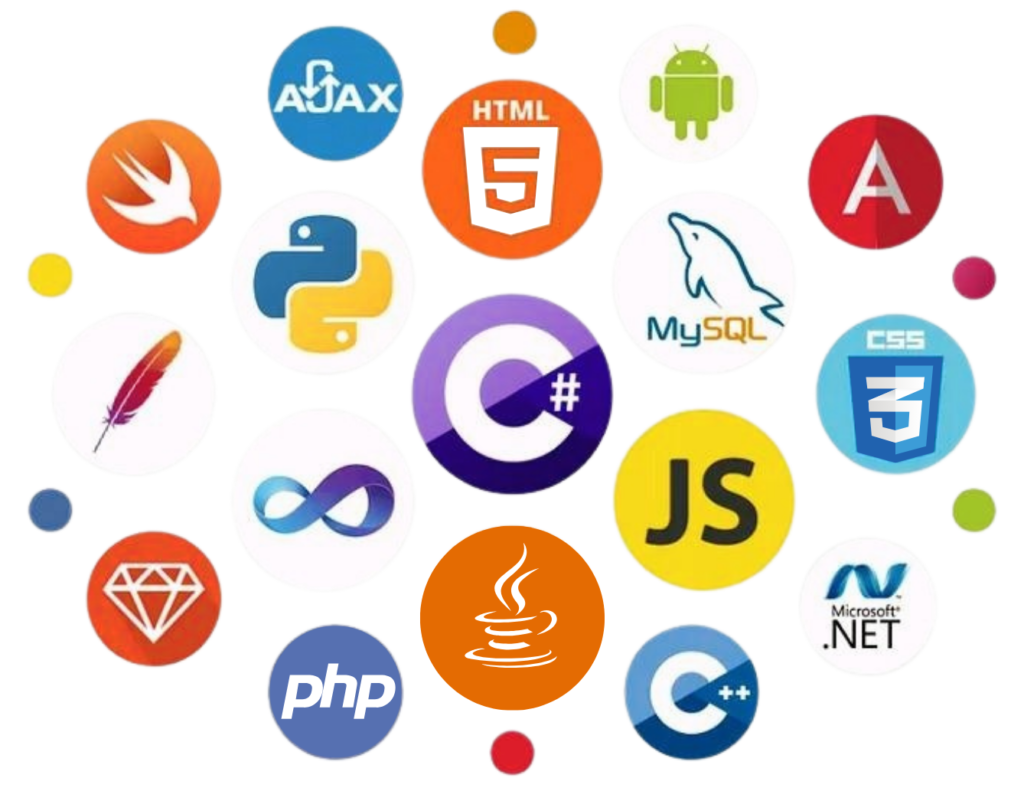Are you curious about making websites? Well, you need to know about the Best Programming Languages used in web development. If you’re new to this and feeling a bit lost, don’t worry – I’m here to help! ✨
Web development has two main parts: front-end and back-end. The front end is what we see on a website, and the back end deals with things happening behind the scenes on the server. 🖥️
When you look at a website’s source code, you’re checking out the front end, not the back end. Here are the languages used for front-end development.
To peek at the source code, right-click on the page and choose “view page source,” or use “Ctrl+U.” You can also type “view-source:” followed by the URL in the address bar. More Details
Now, you might be wondering about front-end languages and what the back end does. Let me break it down for you! 🛠️

Front-End and Back-End
Front-end developers work on the visible part of a website, while back-end developers handle the behind-the-scenes processes. A website needs both to function properly.
Front-end developers make sure the website looks good and focuses on user experience. On the other hand, back-end developers ensure the website works as intended.
For anyone interested in a web development career, it’s important to understand the basic programming languages for both front-end and back-end development.
Web development uses various programming languages. As a beginner, let’s discuss the top 5 basic programming languages you should know.
Basic Programming Language for Web Development
Here are the basic programming languages you need to learn to start web development:
1. HTML
HTML, or Hypertext Markup Language, is not a programming language but a markup language. Its purpose is to define the structure of a webpage.
HTML provides instructions to the browser on how to display content, such as headings, paragraphs, images, tables, and lists. It serves as the backbone of web development and is relatively easy to learn, often taking just a week for beginners to grasp its fundamentals.
2. CSS
After mastering HTML, the next step is to learn CSS. CSS, or Cascading Style Sheets, is a styling language used to define the appearance of a webpage.
CSS allows you to modify the style of various elements on a webpage, such as font style, font size, and color. There are three ways to use CSS in web development: External style sheets, Internal style sheets, and Inline style. An external style sheet can style an entire website, an internal style sheet is applied to specific HTML elements, and inline style affects a single HTML tag.
3. JavaScript
JavaScript serves as the programming language for HTML and the web. It allows you to add behavior to web pages, create web applications, and even design web games. JavaScript is crucial in web development for enhancing the functionality of a website. Learning JavaScript provides the ability to make web pages interactive and dynamic.
Note: The above three are the front-end programming languages used in web development. Now let us discuss some of the basic back-end programming languages.

4. PHP
PHP, which stands for Hypertext Preprocessor, is a server scripting language known for creating dynamic and interactive web pages and applications. It functions as a server-side script, meaning it is executed on the server, while JavaScript, another scripting language, is executed on the client web browser as a client-side script.
Both PHP and JavaScript play key roles in web development, with PHP focusing on server-side functionality.
5. SQL
SQL, or Structured Query Language, is a crucial tool for working with databases. It enables users to access, manipulate, and retrieve data stored in databases, making it an essential language for database management and interaction.

Conclusion
In summary, if you’re interested in web development, focus on learning these five basic languages: HTML for structure, CSS for styling, JavaScript for functionality, PHP for server-side scripting, and SQL for working with databases.
There’s a big demand for both front-end and back-end developers, and you can choose to specialize in one or become a full-stack developer with skills in both areas. The choice is yours, and the web development field offers plenty of opportunities.

